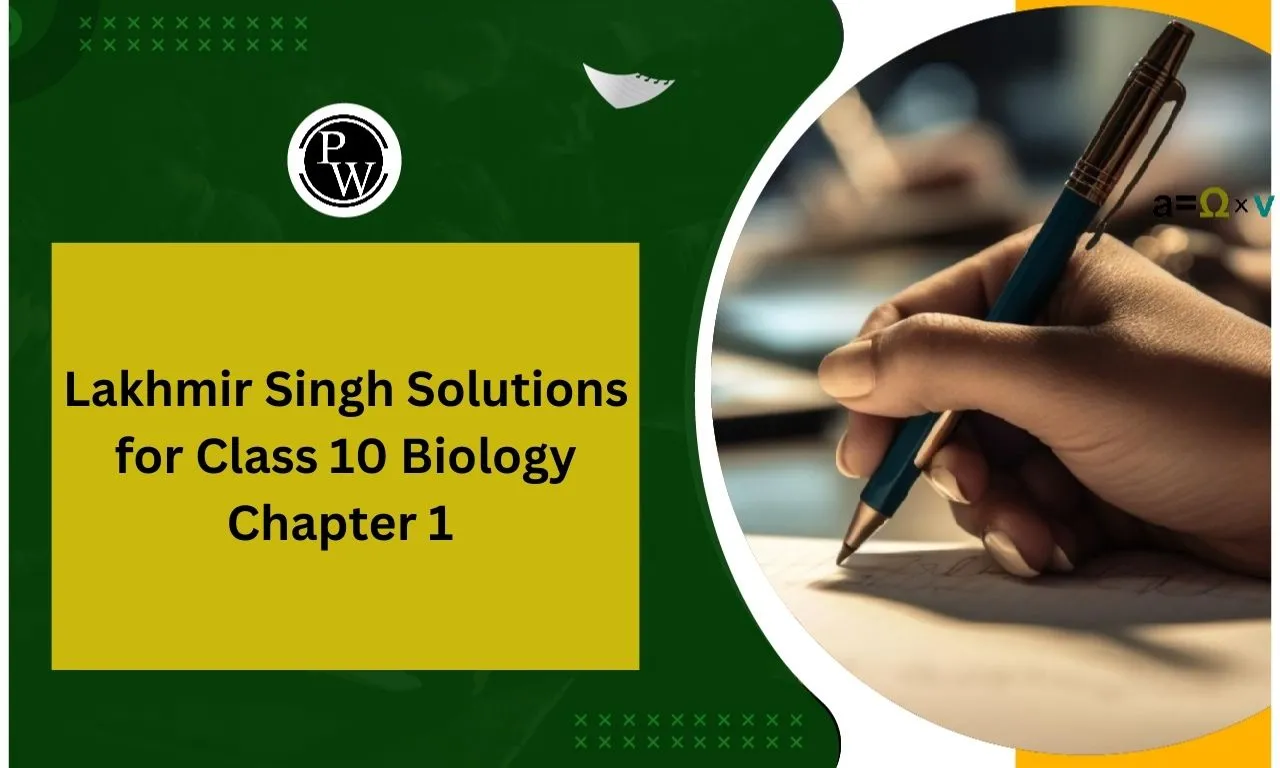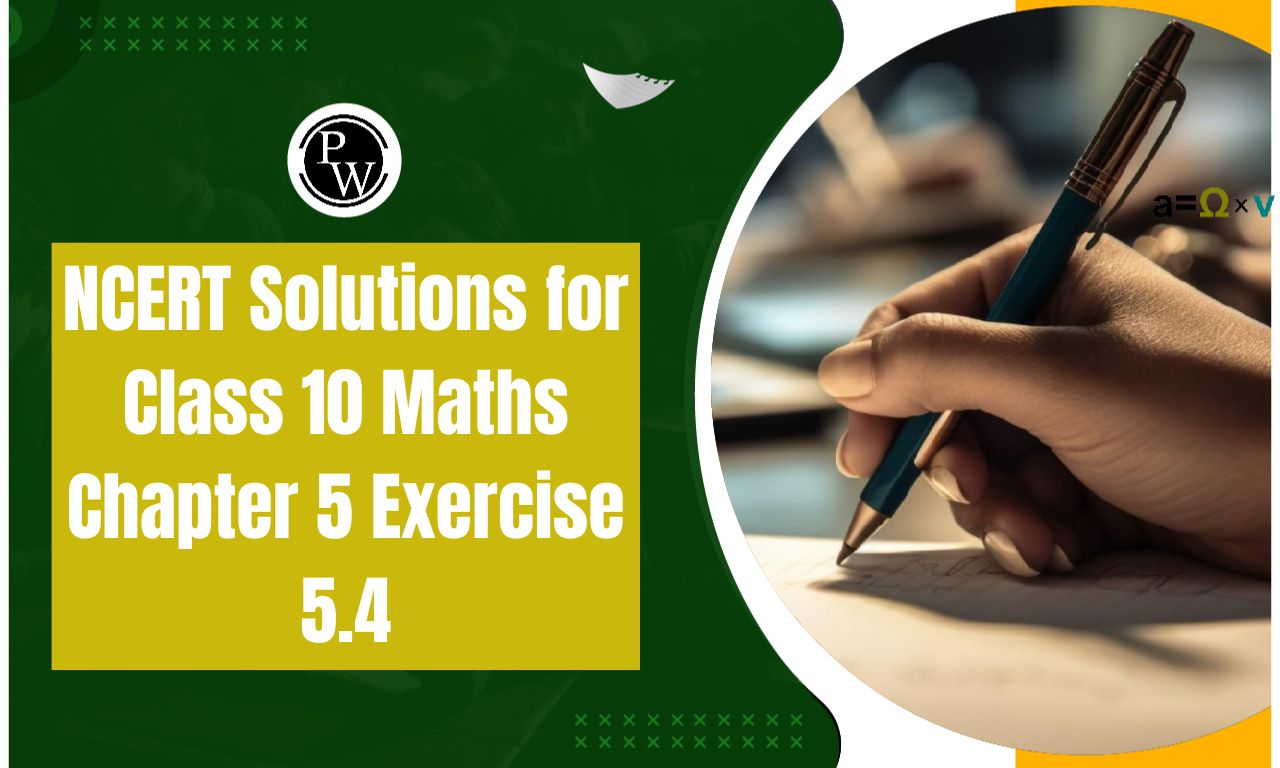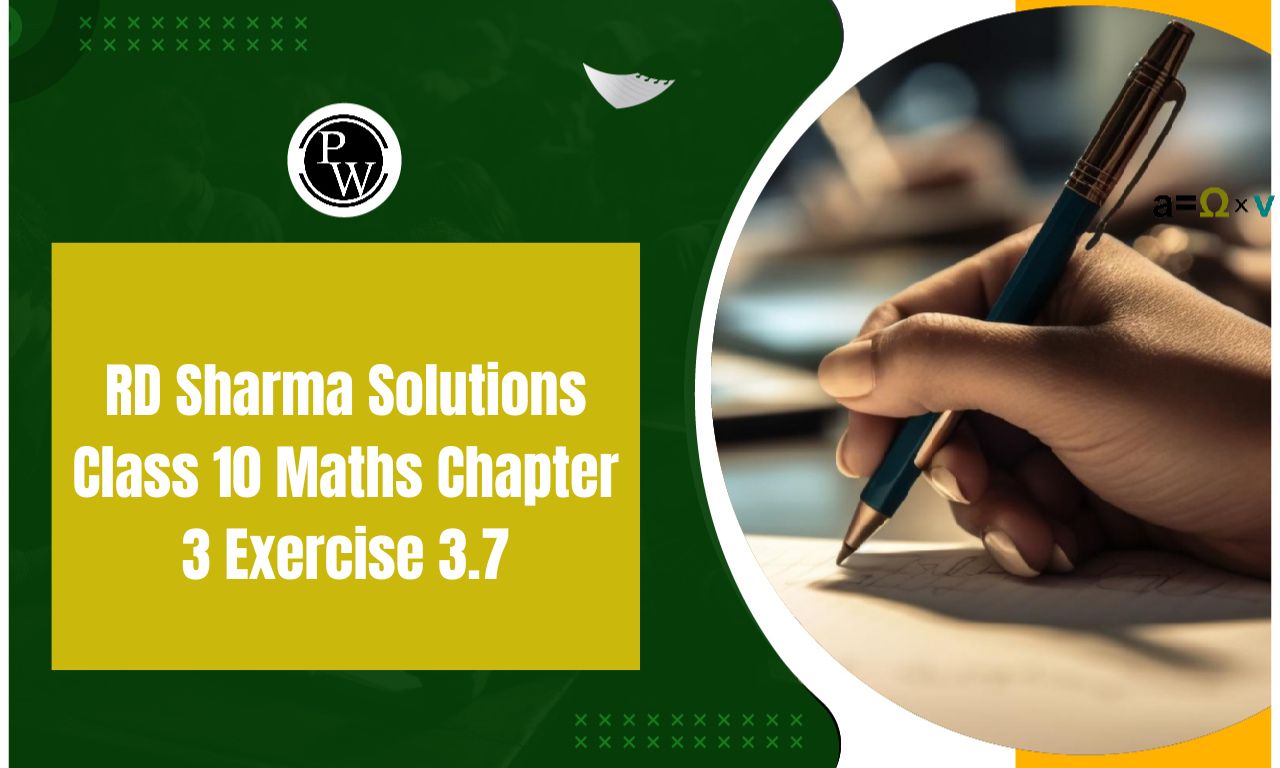

Lakhmir Singh Solutions for Class 10 Biology Chapter 1: Lakhmir Singh’s Class 10 Biology Chapter 1, Life Processes, covers essential biological functions required to sustain life.
It explains nutrition, respiration, transportation, and excretion in plants and animals. The chapter details autotrophic and heterotrophic nutrition, the human digestive system, aerobic and anaerobic respiration, and energy production.
It also explores circulatory and excretory systems, including heart function, blood circulation, and waste elimination in different organisms. Diagrams, flowcharts, and NCERT-based questions enhance understanding. The solutions provide step-by-step explanations, helping students grasp key concepts and score well in exams. The chapter lays the foundation for higher-level biological studies.
Lakhmir Singh Solutions for Class 10 Biology Chapter 1 Overview
Lakhmir Singh’s Class 10 Biology Chapter 1, Life Processes, explains essential biological functions like nutrition, respiration, circulation, and excretion in plants and animals. It covers autotrophic and heterotrophic nutrition, aerobic and anaerobic respiration, human digestive and circulatory systems, and waste elimination.
The solutions provide clear, step-by-step explanations with diagrams and NCERT-based questions, making complex topics easy to understand. These solutions enhance conceptual clarity, strengthen problem-solving skills, and aid in quick revision.
They are beneficial for board exam preparation, helping students score better by providing detailed answers, important questions, and practical applications of life processes.
Lakhmir Singh Solutions for Class 10 Biology Chapter 1 PDF
Lakhmir Singh’s Class 10 Biology Chapter 1, Life Processes, covers essential biological functions like nutrition, respiration, circulation, and excretion in plants and animals.
The solutions provide detailed explanations, diagrams, and NCERT-based answers to help students understand key concepts easily. These solutions enhance concept clarity and exam preparation. Below, we have provided the PDF for easy access and thorough revision of the chapter.
Lakhmir Singh Solutions for Class 10 Biology Chapter 1 PDF
Lakhmir Singh Solutions for Class 10 Biology Chapter 1 Life Process
Below we have provided Lakhmir Singh Solutions for Class 10 Biology Chapter 1 Life Process -
1. Which is the basic requirement of living organisms for obtaining energy?
Answer
The basic requirement of living organisms for obtaining energy is food. Food gives us all kinds of nutrients like vitamins, minerals, proteins, carbohydrates and fats. These vital nutrients help the body to function efficiently. Hence the body will be stable physically and mentally. Hence, food is the basic requirement of living organisms for obtaining energy is food.
2. Which of the following types of energy is used by living organisms to perform vital life processes?
Kinetic energy, Chemical energy, Potential energy, Nuclear energy
Answer
Living organisms rely on chemical energy to carry out essential life processes. Every biological activity is driven by this energy. For example, the food we consume undergoes digestion, breaking down into simpler sugars like glucose and fructose.
These sugars act as chemical compounds that provide energy and help in building and maintaining cells and tissues. This energy is crucial for various bodily functions, including growth, repair, movement, and metabolism.
Thus, chemical energy plays a fundamental role in sustaining life, ensuring that organisms can perform necessary activities to survive and thrive in their environment.
3. Which of the following is an autotroph?
Green plant or Man
Answer
An autotroph is an organism that produces its own food from the raw materials available in its surroundings.
The word autotroph comes from the root words auto for self and troph for food. Here, a green plant is an autotroph. Because a green plant prepares its own food from raw materials like sunlight, chlorophyll, carbon dioxide and water.
4. Name two inorganic substances which are used by autotrophs to make food.
Answer
Autotrophs make their own food through the process of photosynthesis.
The process by which plants make their own food using raw materials like sunlight, chlorophyll, water and carbon dioxide is called photosynthesis. The two inorganic substances used by autotrophs to make food are carbon dioxide and water.
5. What is the mode of nutrition in fungi?
Answer
The mode of nutrition in fungi is saprotrophic. In saprotrophic mode of nutrition, the vital nutrients required for their body are collected from dead and decaying matter.
The other organisms which are saprotrophic is Rhizopus, Yeast, and Mushroom.
6. Name one organism each having saprophytic, parasitic and holozoic modes of nutrition.
Answer
Saprophytic: The mode of nutrition in which organisms feed on dead and decaying matter.
Parasitic: The mode of nutrition in which organisms feed themselves by depending on the host or on other living organisms.
Holozoic: The mode of nutrition in which the digestion of food is allowed only after the ingestion of food.
An organism having the following modes of nutrition are:
Saprophytic – Fungi
Parasitic – Plasmodium
Holozoic – Human Beings
7. Name the process by which plants make food.
Answer
The process by which plants make food is photosynthesis. Photosynthesis is the process in which green plants use sunlight to make their own food. Photosynthesis requires sunlight, chlorophyll, water, and carbon dioxide gas.
Chlorophyll is a substance in all green plants, especially in the leaves. Plants take in water from the soil and carbon dioxide from the air.
8. In addition to carbon dioxide and water state two other conditions necessary for the process of photosynthesis to take place.
Answer
The process by which plants make food is photosynthesis. Photosynthesis is the process in which green plants use sunlight to make their own food. The two other conditions necessary for the process of photosynthesis to take place are sunlight and chlorophyll.
9. Apart from sunlight and chlorophyll, what are the things required to make food by photosynthesis?
Answer
Apart from sunlight and chlorophyll, plants require carbon dioxide and water to make food by photosynthesis. The process by which plants make food is photosynthesis.
Photosynthesis is the process in which green plants use sunlight to make their own food. Photosynthesis requires sunlight, chlorophyll, water, and carbon dioxide gas. Chlorophyll is a substance in all green plants, especially in the leaves. Plants take in water from the soil and carbon dioxide from the air.
10. (A) Name a gas used in photosynthesis.
(b) Name a gas produced in photosynthesis
Answer
We all know that photosynthesis is a process in which green plants use sunlight to make their own food. Photosynthesis requires sunlight, chlorophyll, water, and carbon dioxide gas. The reaction involved in photosynthesis is:
(a)The gas used in photosynthesis is carbon dioxide.
(b)The gas produced in photosynthesis is oxygen.
11. The leaves of a plant first prepare food A by photosynthesis. Food A then gets converted into food B. What are A and B?
Answer
Photosynthesis is a process in which green plants use sunlight to make their own food. Photosynthesis requires sunlight, chlorophyll, water, and carbon dioxide gas. The reaction involved in photosynthesis is:
The glucose formed in the above reaction is converted into starch and then is used by the plant for supplying energy to the plants.
Hence here A is Glucose and B is starch.
12. Which substance is used to remove chlorophyll from a green leaf during photosynthesis experiments?
Answer:
During the photosynthesis experiment ethanol, which is an alcohol, is used to remove chlorophyll.
In this experimental procedure ethanol reacts with the leaf and automatically decolorizes the leaf. Hence the green pigment chlorophyll gets removed from the leaf and the experiment then proceeds
13. Why do we boil the leaf in alcohol when we are testing it for starch?
Answer
When testing a leaf for starch, we boil it in alcohol to remove the green pigment (chlorophyll). This is because the leaf's natural green color can interfere with the starch test results.
In the test, iodine solution is added to the leaf, and if starch is present, it changes from brown to blue. Since a green leaf may not show this change clearly, removing chlorophyll helps us see the results better. That’s why we boil the leaf in alcohol before testing for starch.
14. (a) Name the pigment in leaves which absorbs sunlight energy.
(b) What is the color of this pigment?
Answer
(a) The pigment in leaves which absorbs sunlight energy is chlorophyll.
During the process of photosynthesis all the parts of the plant are involved in this process. The root system and the shoot system both are involved.
The shoot system of the plant includes the stem and leaves of the plant. As we all know that the photosynthesis process is carried out in the presence of sunlight. The pigment called chlorophyll has the ability to absorb sunlight’s energy. These are present in the chloroplast of the plant cell.
(b) The color of the pigment is green. It is the photosynthetic pigment present in leaves. It is used in providing oxygen to plants and also plays a vital role in the process of photosynthesis. It absorbs all the radiations of variant colors like violet, blue, orange and red. But it reflects the green light and hence the leaves appear green in color.
15. Name the pigment which can absorb solar energy.
Answer:
Chlorophyll is a pigment that can absorb solar energy in plants. It is present in the leaves of the plant. To be specific, these are situated in the chloroplast of the plant cell. It is the vital photosynthetic pigment in leaves as it involves the conversion of light energy into chemical energy.
It absorbs all the radiations of variant colors like violet, blue, orange and red. But, it reflects the green light and hence the leaves appear green in color. It absorbs the solar energy varying from the wavelength around 430nm (blue) to 662nm (red). Other than plants these are also present in some other organisms like bacteria and green algae.
16. Name the organelle of plant cells in which photosynthesis occurs.
Answer
The organelle of plant cells in which photosynthesis occurs in the chloroplast of plant cells. The photosynthetic pigment, chlorophyll is present in the chloroplast of the cell.
It helps to absorb the solar energy. It converts the light energy into chemical energy and helps in the process of photosynthesis. The chloroplast organelle is present on the leaves of the plant.
17. Apart from carbon dioxide and water, name four other raw materials which are needed by the plants.
Answer
The four other raw materials which are needed by the plants are Nitrogen, Phosphorous, Iron and Magnesium. These are the other vital nutrients required for the plant’s growth and stability. These help in the formation of new cells which further leads to the development of plant tissue. Nitrogen is the major component of
amino acid and is also building blocks of protein. Phosphorus helps in the conversion of light energy into chemical energy. Iron is involved in the synthesis of chlorophyll and also for the maintenance of chloroplast structure and function.
Magnesium is the central atom of chlorophyll molecule and is a building block of the green pigment in plants.
18. Where is chlorophyll mainly present in a plant?
Answer
Chlorophyll is a pigment that can absorb solar energy in plants. It is present in the leaves of the plant. To be specific, these are situated in the chloroplast of the plant cell.
It is the vital photosynthetic pigment in leaves as it involves the conversion of light energy into chemical energy. It is the photosynthetic pigment present in leaves. It is used in providing oxygen to plants and also plays a vital role in the process of photosynthesis.
19. What is the name of those cells in the leaf of a plant which controls the opening and closing of stomata?
Answer
The cells in the leaf of a plant that control the opening and closing of stomata are guard cells. These cells are in bean shape and surround the stoma.
These are the epidermal cells and help in exchange of gases by opening and closing of stomata. These also play a major role in transpiration and minimal loss of water. Light is a major aspect of these guard cells.
20. Name an animal whose process of obtaining food is called phagocytosis.
Answer
Amoeba is an organism whose process of obtaining food is called phagocytosis. Phagocytosis is a process by which certain living cells called phagocytes ingest or engulf other cells or particles. These may be either unicellular organisms like amoeba or our white blood cell.
21. All the animals can be divided into three groups on the basis of their eating habits. Name the three groups.
Answer
Animals can be divided into three groups on the basis of their eating habits are:
(i) Herbivores: The animals which feed on plants, leaves, fruits and other natural products for their food are called herbivores. Example: cow, goat, sheep, etc.
(ii) Carnivores: The animals which feed on other animals for their food are called carnivores. Example: Lion, Cat, Shark, etc.
(iii) Omnivores: The animals which feed on both plants and animals for their food are called omnivores. Example: Rats, Pigs, Bear etc.
22. What is the scientific name of the animals which are:
(i) only meat-eaters
(ii) only plant-eaters
(iii) both plant and meat-eaters
Answer
(i) Only meat eaters: Carnivores – The animals which feed on other animals for their food are called carnivores. Example: Lion, Cat, Shark, etc.
(ii) Only plant eaters: The animals which feed on plants, leaves, fruits and other natural products for their food are called herbivores. Example: cow, goat, sheep, etc.
(iii) Both, plant and meat-eaters: The animals which feed on both plants and animals for their food are called omnivores. Example: Rats, Pigs, Bear etc.
23. Name the green pigment present in the leaves of a plant.
Answer
The green pigment present in the leaves of a plant is chlorophyll. Chlorophyll is a pigment that can absorb solar energy in plants. To be specific, these are situated in the chloroplast of the plant cell.
It is the vital photosynthetic pigment in leaves as it involves the conversion of light energy into chemical energy. It is used in providing oxygen to plants and also plays a vital role in the process of photosynthesis.
24. Arrange the following processes involved in the nutrition in animals in the correct order (in which they take place):
Assimilation, Egestion, Ingestion, Absorption, Digestion
Answer
The correct order is Ingestion, digestion, absorption, assimilation and egestion.
Ingestion is the process the food is taken inside through mouth and broken down by teeth and initial digestion takes place in the mouth by saliva.
Digestion is the process in which food is digested by using few enzymes and is used by the cells for producing energy.
Absorption is the process in which cells use the energy from the digested food and helps in building tissues in our body.
Assimilation is the process in which digested food moves into the cells of the body.
Egestion is the process in which undigested food is removed out from the body through excretion.
25. How does Amoeba engulf the food particle?
Answer
Endocytosis is a process by which amoeba engulfs its food. Amoeba has a flexible membrane and finger-like projections called pseudopodia. Pseudopodia forms a vacuole around it and helps in engulfing the food. When the food particle is completely trapped inside its vacuole amoeba secretes its digestive enzymes and digests the food.
Benefits of Using Lakhmir Singh Solutions for Class 10 Biology Chapter 1
Concept Clarity – Provides easy-to-understand explanations of key topics like nutrition, respiration, circulation, and excretion.
Step-by-Step Solutions – Detailed answers to all NCERT-based questions help in better comprehension.
Exam Preparation – Covers important questions frequently asked in board exams, boosting confidence.
Diagrams & Illustrations – Well-labeled diagrams make learning more visual and engaging.
Quick Revision – Summarized explanations allow students to revise efficiently before exams.
Improves Problem-Solving Skills – Helps students tackle application-based questions with ease.
Error-Free & Reliable – Solutions are accurate, ensuring correct knowledge and understanding.
Lakhmir Singh Solutions for Class 10 Biology Chapter 1 FAQ
What is the purpose of life processes?
What is required for all life processes?
What is the basic process of life?













